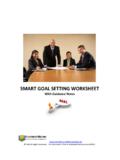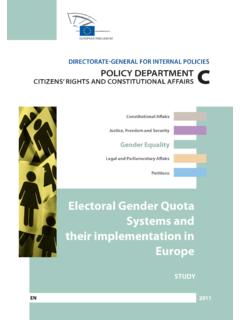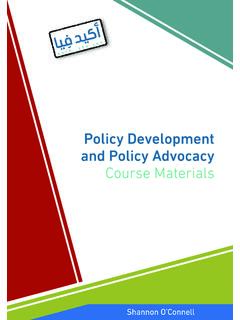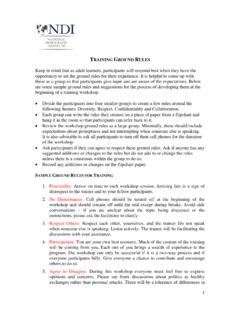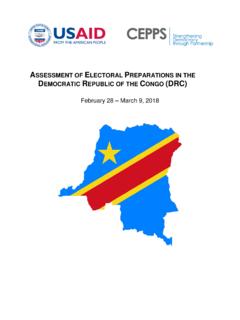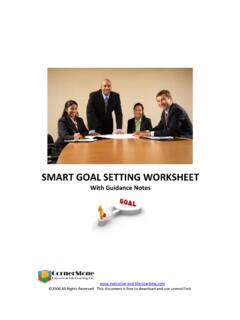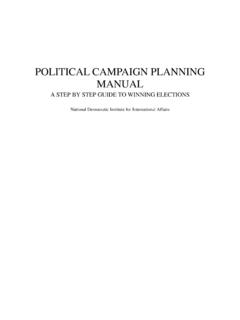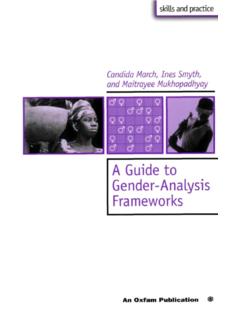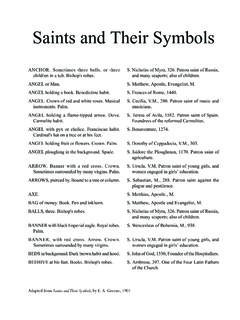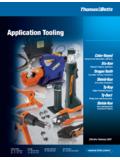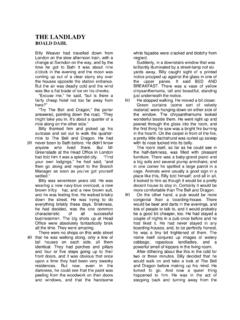Transcription of Games to use in workshops, meetings and the community
1 100 ways to energise groups: Games to use in workshops, meetings and the ball and truths and a the on my we have in is the leader? are you? kind of animal? sun shines in the am I? and to the salad825. Prrr and Pukutu on s in/tide s buses m going on a someone something blue says has changed? graph tig islands animal game a king is and t of the parcel and rabbit longest of the Jungle the do you like your neighbour? s tail the like you to under chins up, sit down! game balance and guiding to people to Seven orchestra without the and point stop , sit and the rhythm Cokey and Delilah E sagidi are we doing? is the adverb? am I feeling? Kabita! gifts on backs on the day23100 ways to energise groupsTABLE OF CONTENTS ttiittlleePPaaggee thanks to all those who contributed to thispublication.
2 Particular thanks goes to staff andconsultants from Alliance linking organisations, theAlliance secretariat, and key partners in Africa, Asia,Latin America and Eastern Europe. In addition, wewould like to reference the following publicationsfrom which we drew: Games for Training, RossKidd, PEER Botswana, Listening for Health,International Catholic Child Bureau and Child-to-Child Trust, 1997 and Gamesters Handbook 140 Games for Teachers and Group Leaders, Donna Brandes and Howard Phillips, in this publication are by Petra International HIV/AIDS Alliance (the Alliance) isan international non-governmental organisation thatsupports communities in developing countries tomake a significant contribution to HIV prevention,AIDS care and support to children affected by theepidemic. Since its establishment in 1993, theAlliance has provided financial and technical supportto NGOs and CBOs from more than 40 countries.
3 In addition, the Alliance promotes good practice in community responses to HIV/AIDS more broadlythrough evaluation, operations research, thedevelopment of training materials and tools, as well as policy and advocacy activities. 100 Ways to Energise Groups: Games to Usein Workshops, meetings and the Communityis one of a series of resources that the Alliance isdeveloping to encourage participation in practice. It is a compilation of energisers, icebreakers andgames that can be used by anyone working withgroups of people, whether in a workshop , meetingor community setting. Why use energisers?Facilitators use Games for a variety of differentreasons, including helping people to get to knoweach other, increasing energy or enthusiasm levels,encouraging team building or making people thinkabout a specific issue. Games that help people toget to know each other and to relax are called icebreakers. When people look sleepy or tired,energiserscan be used to get people moving andto give them more enthusiasm.
4 Other Games can beused to help people think through issues and canhelp to address problems that people may encounterwhen they are working together. Games can alsohelp people to think creatively and laterally. This guide includes all these different types of Games in no particular order and facilitators canpick and choose those that are most appropriate fortheir specific purpose and context. Things to consider when using Energisers Try to use energisers frequently during a workshop or meeting , whenever people look sleepy or tired or to create a natural break between activities. Try to choose Games that are appropriate for the local context, for example, thinking carefully about Games that involve touch, particularly of different body parts. Try to select Games in which everyone can participate and be sensitive to the needs and circumstances of the group. For example, some of these Games may exclude people with disabilites, such as difficulty walking or hearing, or people with different levels of comfort with literacy.
5 Try to ensure the safety of the group, particularly with Games that involve running. For example, try to make sure that there is enough space and that the floor is clear. Try not to use only competitive Games but also include ones that encourage team building. Try to avoid energisers going on for too long. Keep them short and move on to the next planned activity when everyone has had a chance to move about and wake up!123 Howdy HowdyParticipants stand in a circle. One personwalks around the outside of the circle andtaps someone on the shoulder . That personwalks the opposite way around the circle,until the two people meet. They greet eachother three times by name, in their ownlanguage. The two people then race back,continuing in opposite directions aroundthe circle, to take the empty place. Whoeverloses walks around the outside of the circleagain and the game continues untileveryone has had a ball gameEveryone stands in a close circle.
6 (If thegroup is very large, it may be necessary tosplit the group into two circles.) Thefacilitator starts by throwing the ball tosomeone in the circle, saying their name asthey throw it. Continue catching andthrowing the ball establishing a pattern forthe group. (Each person must rememberwho they receive the ball from and whothey have thrown it to.) Once everyone hasreceived the ball and a pattern isestablished, introduce one or two moreballs, so that there are always severalballs being thrown at the same time,following the set andadjectivesParticipants think of anadjective to describe how theyare feeling or how they adjective must startwith the same letter astheir name, for instance, I m Henri and I mhappy . Or, I m Arun and I m amazing. As they say this, they can also mime anaction that describes the truths and a lieEveryone writes their name, along with fourpieces of information about themselves on alarge sheet of paper.
7 For example, Alfonselikes singing, loves football, has five wivesand loves PRA . Participants then circulatewith their sheets of paper. They meet inpairs, show their paper to each other, andtry to guess which of the facts is a eyesParticipants stand in a circle. Each person makes eye contact with another personacross the circle. The two walk across thecircle and exchange positions, whilemaintaining eye contact. Many pairs canexchange at the same time, and the groupshould try to make sure that everyone inthe circle is included in the exchange. Beginby trying this in silence and then exchangegreetings in the middle of the ways to energise groupsMatch the cardsThe facilitator chooses a number of well-known phrases, and writes half of eachphrase on a piece of paper or card. Forexample, they write Happy on one piece ofpaper and Birthday on another. (Thenumber of pieces of paper should match thenumber of participants in the group.)
8 Thefolded pieces of paperare put into a participanttakes a piece ofpaper from the hatand tries to findthe member of thegroup with thematching half ofthe on my rightParticipants are seated in a circle. Thefacilitator arranges for the space on theirright to remain empty. They then ask amember of the group to come and sit in theempty space; for example, I would like Lilito come and sit on my right . Lili moves andthere is now a space on the right of anotherparticipant. The participant who is sittingnext to the empty space calls the name of someone different to sit on his or herright. Continue until the entire group hasmoved we have in commonThe facilitator calls out a characteristic ofpeople in the group, such as havingchildren . All those who have childrenshould move to one corner of the room. Asthe facilitator calls out more characteristics,such as likes football , people with thecharacteristic move to the indicated space.
9 Who is the leader?Participants sit in a circle. One personvolunteers to leave the room. After theyleave, the rest of the group chooses a leader . The leader must perform a series ofactions, such as clapping, tapping a foot,etc, that are copied by the whole group. Thevolunteer comes back into the room, standsin the middle and tries to guess who isleading the actions. The group protects theleader by not looking at him/her. The leadermust change the actions at regular intervals,without getting caught. When the volunteerspots the leader, they join the circle, and theperson who was the leader leaves the roomto allow the group to choose a new are you?Ask for a volunteer to leave the room. Whilethe volunteer is away, the rest of theparticipants decide on an occupation forhim/her, such as a driver, or a the volunteer returns, the rest of theparticipants mime activities. The volunteermust guess the occupation that has beenchosen for him/her from the activities thatare kind of animal?
10 Ask participants to divide into pairs and toform a circle. Put enough chairs in the circleso that all but one pair has seats. Each pairsecretly decides what type of animal theyare. The two participants without chairs arethe elephants. They walk around the circlecalling the names of different they guess correctly, the animalsnamed have to stand up and walk behindthe elephants, walking in mime. Thiscontinues until the elephants can guess nomore. Then they call Lions! and all pairsrun for seats. The pair left without chairsbecome the elephants for the next winkBefore the game starts, asksomeone to be the thekiller and ask them tokeep their identity asecret. Explain thatone person amongthe group is thekiller and they cankill people bywinking at then walksaround the room indifferent directions,keeping eye contactwith everyone theypass. If the killerwinks at you, youhave to play dead. Everyone has to try andguess who the killer sun shines sit or stand in a tight circlewith one person in the middle.
